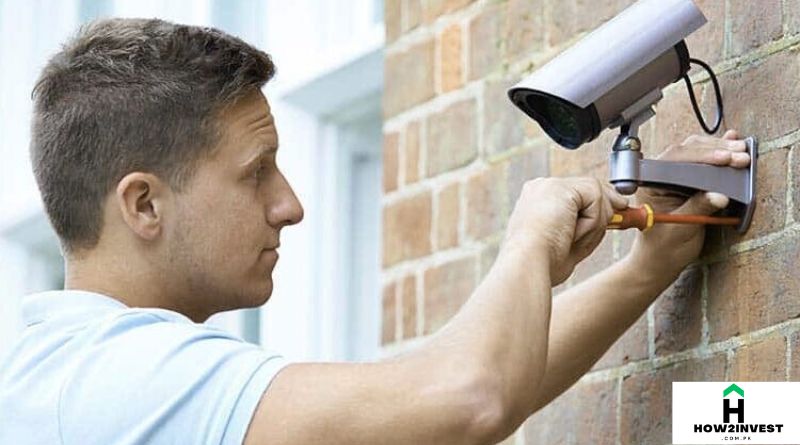In an era where safety and surveillance are top priorities, security camera placement is more critical than ever. Whether it’s for a home, a business, or a public facility, strategically placing your cameras can make the difference between capturing crucial evidence and missing it entirely. While high-quality security cameras are important, improper placement can render even the most expensive system ineffective. This comprehensive guide explores the essential do’s and don’ts of security camera placement to help you maximize coverage and get the most from your surveillance investment.
Why Security Camera Placement Matters
Security camera placement isn’t just about hanging a camera in any corner of a room or pointing it at your front door. Poor placement can lead to blind spots, privacy issues, poor image quality, and even legal troubles. Properly positioned cameras ensure that every inch of critical space is covered while deterring criminal activity, enhancing response time during emergencies, and protecting both people and property. Strategic placement not only increases effectiveness but also ensures that the camera system complies with relevant laws and ethical considerations.
Do: Cover Main Entry Points
When planning your security camera setup, the first priority should be the main entry points of your home or business. Front doors, back doors, and first-floor windows are the most common entryways for intruders. Place cameras above these areas at an angle that captures both faces and full-body shots. This allows for better identification if an intruder tries to enter the property. Also, ensure the camera is slightly out of reach to prevent tampering but not so high that it sacrifices image detail.
Don’t: Place Cameras Where They Invade Privacy
One of the most critical mistakes in security camera placement is setting them up in areas that compromise privacy. Avoid placing cameras in bathrooms, bedrooms, or other sensitive areas, as this could not only lead to discomfort but may also breach privacy laws depending on your jurisdiction. For businesses, employee areas like break rooms should also be treated with care unless there’s a compelling security reason. Always balance security with privacy to maintain trust and remain legally compliant.
Do: Use Cameras to Monitor Perimeter Areas
Perimeter surveillance is just as important as monitoring indoor areas. Driveways, backyards, fences, and garage entrances should all be covered with outdoor-rated cameras. These cameras should be positioned to monitor movement along the boundary of your property, giving you early warning signs of a potential intrusion. Wide-angle lenses can be particularly effective for large areas, and motion-activated cameras help save storage while capturing critical moments.
Don’t: Forget to Protect the Cameras Themselves
Outdoor security cameras are susceptible to weather damage, vandalism, and theft. Avoid placing cameras in exposed or easily reachable locations. Use weatherproof casings and consider using vandal-resistant mounts for added protection. If possible, place cameras under eaves or roof overhangs to protect them from rain and sun glare. Investing in camera protection is as important as the cameras themselves—after all, a damaged camera can’t record anything.
Do: Ensure Good Lighting for Better Footage
Lighting plays a crucial role in how effective your cameras are, especially for identification purposes. Even high-definition cameras can produce poor-quality footage in low-light conditions. Make sure key areas are well-lit, especially at night. If your camera doesn’t have good night vision capabilities, consider installing motion-sensor lights nearby. This not only enhances visibility but also acts as a deterrent to would-be intruders.
Don’t: Rely Solely on Indoor Cameras
While indoor cameras are essential for monitoring internal activities, relying solely on them can leave you vulnerable to undetected exterior threats. If an intruder disables an outdoor camera before making their way inside, your security footage may start too late. Exterior cameras serve as the first line of defense and often deter break-ins before they occur. A balanced mix of indoor and outdoor cameras offers comprehensive coverage.
Do: Cover Blind Spots and Hidden Areas
Every building has blind spots—areas that are not easily visible or accessible. These might include stairwells, alleyways, or dark corners around the building. These are often the areas criminals exploit to avoid detection. Conduct a thorough walk-through to identify and eliminate these blind spots with strategically placed cameras. Pan-tilt-zoom (PTZ) cameras or fisheye lenses can be effective in these cases.
Don’t: Place Cameras Directly Facing Sunlight or Lights
Positioning cameras in direct line with sunlight or artificial lights can cause lens flare, washed-out images, or shadows that obscure important details. Always take the natural movement of the sun into account when mounting cameras, and adjust angles to avoid backlighting. For indoor setups, avoid placing cameras directly opposite bright windows or lights.
Do: Install Cameras at the Right Height
Installing security cameras too high or too low can negatively impact their effectiveness. Cameras that are too high may miss important facial features, while those too low can be easily tampered with. A general rule of thumb for exterior cameras is to place them 8 to 10 feet above the ground. This height strikes a balance between capturing quality footage and keeping the camera out of reach.
Don’t: Overlook Connectivity and Power Sources
A perfectly placed camera is useless without reliable connectivity and power. Make sure each camera location has access to power outlets or is compatible with your wireless setup. For wired systems, ensure proper cable management to avoid signal interference and exposure to the elements. Battery-powered cameras should be installed in accessible locations for easy maintenance.
Do: Utilize Strategic Angles and Focal Points
Camera angles matter. Avoid wide, sweeping placements that cover too much area at the expense of detail. Instead, focus each camera on a specific point of interest, such as entrances, driveways, or cash registers. Overlapping fields of view between cameras ensure nothing is missed and provide multiple perspectives for important areas. Angle the cameras slightly downward to maximize facial visibility and body recognition.
Don’t: Ignore Local Laws and Regulations
Every jurisdiction has laws governing surveillance, especially regarding where you can place cameras and who can be recorded. For example, recording someone without consent in a private space could lead to legal consequences. Be familiar with local regulations to ensure compliance. Posting clear signage can also help notify individuals that they are under surveillance, which is often a legal requirement.
Do: Regularly Review and Adjust Camera Placement
Security needs evolve over time. Whether you’re adding new entry points, changing your property layout, or upgrading your system, periodic reviews of your camera setup are essential. What worked last year may no longer be sufficient today. Regularly check camera feeds, adjust angles, and test motion detection settings to ensure optimal performance.
Final Thoughts
Security camera placement is not a one-size-fits-all approach. It requires careful planning, attention to detail, and ongoing evaluation. By following these do’s and don’ts, you can create a surveillance system that not only deters criminal activity but also provides critical documentation when needed. A well-placed camera system is a powerful tool in your security arsenal, offering peace of mind and a stronger sense of safety for everyone on the premises.
May Also Read: how2invest

